BLOG
~A Local Representative's Report on China's Energy Situation~
- Energy
2020.10.26
The MOL Group has overseas networks worldwide which enables us to provide high-quality services to our customers and give them peace of mind. Currently, due to the corona virus, free travel abroad is restricted, but we are committed to providing you with the latest information on the local situation in each country.
The first one is from Shanghai, China. Shanghai is part of the world's second largest economy with an annual cargo volume of about 700 million tons, ranking it first in the world in size (2018). We will be reporting on China’s current economic situation, the energy situation, and even local food information!

The recovery towards the second half of 2020
About six months have passed since the first coronavirus was discovered in Wuhan, China. Initially, China locked down various locations at an astonishingly fast pace, halting all economic activities, and managed to contain the spread of the infection locally. In the period January-March 2020, China’s GDP recorded a negative growth of 6.8% for the first time, but economic activity has since gradually resumed, with the economy growing by 3.2% in April-June (while other major countries had negative growth). Although the first half of the year saw -1.6% growth, positive growth is expected in 2020 overall. Economic indicators available as of August show the economy is indeed on the road to recovery, although it remains to be seen whether the recovery will continue at its current pace.
US-China trade friction has been reported frequently since 2018. Recently the tensions between the two countries seems to have been increasing even more.
The exchange of additional tariffs between the U.S. and China, which has been going on since 2018, came to an end with the signing of an agreement in January 2020. Part of the agreement states that China will purchase more than $ 200 billion in additional industrial and agricultural products, energy, and services from the U.S. over the two years of 2020 and 2021 (based on the import value in 2017).
As shown in the chart below, China's actual imports from the U.S. in the first half of 2020 decreased 4.4% year-on-year to $ 56.4 billion. The decline was 6.5 points from the second half of 2019 (-10.9%). The U.S. share of China's imports value increased by 0.2 points from the previous term (5.9%) to 6.1%, moving up one place from 2019 to third place in the rankings (based on figures released by the General Administration of Customs of China).
The relationship between these two superpowers and China's foreign strategy will need to be closely monitored moving forward.
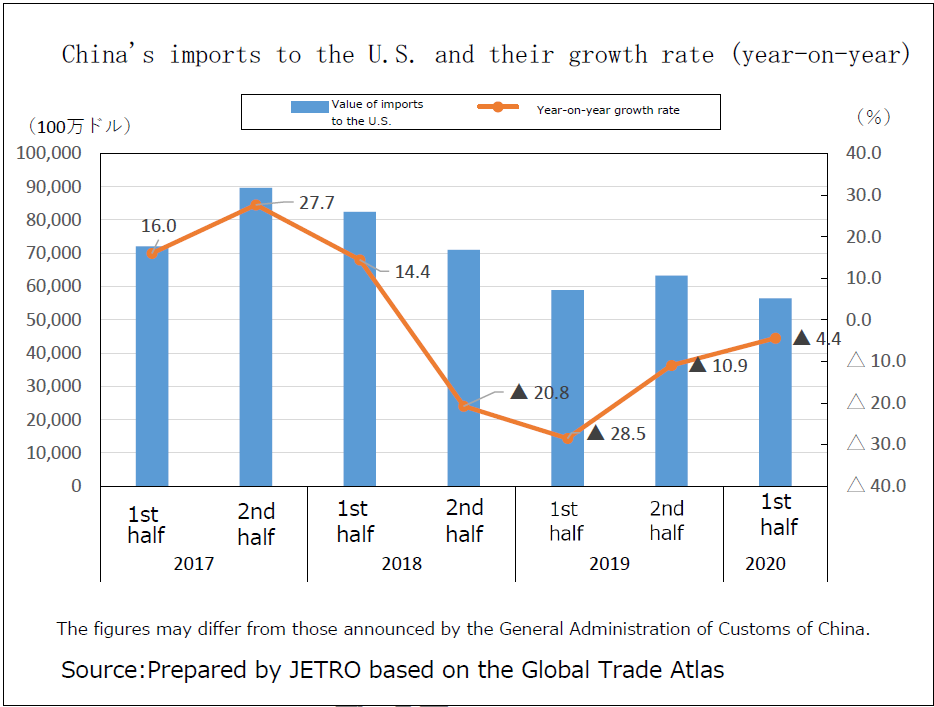
What kind of energy supports a total population of about 1.4 billion people?
China has a population of about 1.4 billion people. It is no exaggeration to say that the future of its energy consumption will determine the world's energy trends. With the recent rise in environmental awareness and the accelerating shift to clean energy, where and how is China going to get its massive energy needs from? China’s overall energy consumption in 2019 depend on coal for about 60% of its total energy consumption, but coal consumption is virtually unchanged compared to that of in 2014, though an overall growth of energy consumption is 14%.
So what is growing instead? The majority of the increase in energy consumption was provided by natural gas and non-fossil fuels. In particular, the growth of natural gas has been steadily increasing.
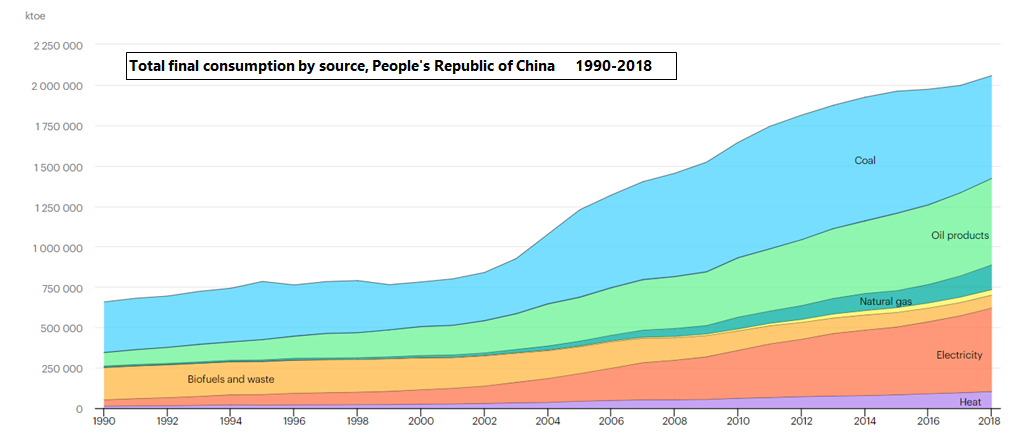
Source:IEA
Compared with the energy sources of Japan and the United States, China's energy consumption is highly dependent on coal and hydroelectric power. China has many large and small hydroelectric power plants, and around the end of June of this year, the "Wudongde Hydroelectric Power Plant" began operating upstream of the Yangtze River. This power plant is one of the huge dams planned at great expense, with a power generation capacity of more than 10 GW, the world's highest operating capacity. The height of the dam is 270 meters which is the highest in the world, and the world’s first use of low-heat cement concrete. In these reasons, it is an important power plant in promoting the implementation of development strategies in the new era.
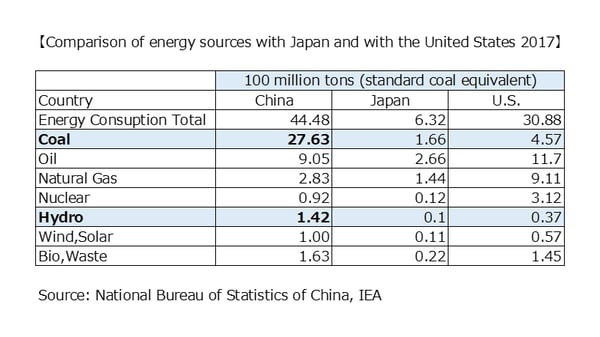
What is the status of China’s renewable energy efforts?
While the world is shifting to renewable energy in order to protect the environment and realize a sustainable society, it is difficult to reduce CO2 emissions in a country with a total population of about 1.4 billion people. However, it is possible to reduce the use of fossil fuels and thereby greenhouse gas emissions in the generation of electricity. What is the status of China’s efforts in the field of renewable energy for local consumption and the country’s energy self-sufficiency?
China's renewable energy-related policies are centered on the 13th Five-Year Renewable Energy Plan (2016-2020) announced in February 2017. The goal of developing greater renewable energy power generation capacity is expected to employ 13 million people by 2020 and the investment of 40 trillion yen in renewable electricity between 2016 and 2020.
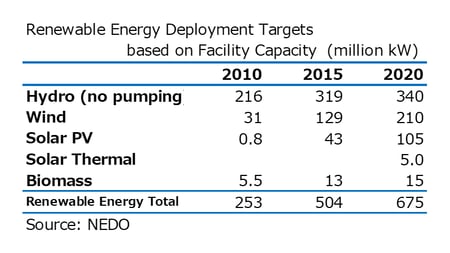
As of the end of 2019, China achieved the following goals:
・Non-fossil primary energy sources (including pumped storage power generation and nuclear power generation) was 15.3% (target of 15% was set).
・Doubled the installed capacity of solar power generation facilities to 20,468 kW (target 10,500 kW).
・Wind power capacity is 210 million kW on a capacity basis (target 210 million kW achieved) Of this, offshore wind power achieved 593kW (target 500kW).
The rapid installation of solar power generation has led to a shortfall of 110 billion yuan (1.9 trillion yen) in subsidies, and the government is reviewing the subsidy system, reducing the purchase price of wind power and solar power, and curbing the overall volume in the construction quota. New projects are concentrated in highly populated areas such as Shandong, Zhejiang, Hebei, Jiangsu, and Anhui provinces, but serious land-use problems are occurring, and it is expected that development will be promoted in inland areas where the population is small, while curbing the use of coastal areas. Land use problems are also occurring in the area of wind power generation, and there are calls for a shift to offshore power generation.
Cumulative installed capacity distribution of wind power generation
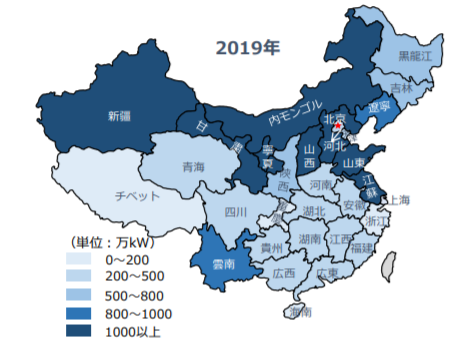
Cumulative installed capacity distribution of solar power generation
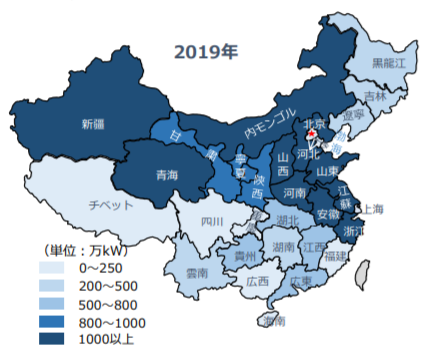
(Source: NEDO China's Renewable Energy Policy and Situation during the 13th Five-Year Plan)
COP26, which was scheduled to be held in November this year, was postponed due to the spread of the coronavirus (COVID-19). However, an online ministerial-level meeting was held under the leadership of the Ministry of the Environment of Japan was held on 3rd September to share concrete actions and knowledge about recovery from COVID-19 and climate change / environmental measures in each country. China participated in the meeting, and the meeting subsequently saw the launch of "Platform for Redesign 2020", an information platform to share information on the status and plans of each country’s recovery efforts from COVID-19 in relation to climate change and environmental measures. Ministers, International Organizations, local governments, industry, citizens and others were invited to submit video messages, which will be posted on the site in due course.
A sufficient source of energy, a surprisingly deep noodle culture?!
Carbohydrates, a source of energy for the human body, is often seen as an enemy in diet books. In Japan there are many kinds of noodles available such as ramen, udon, soba, kishimen, etc. In China is noodles are commonly eaten for lunch and evening meals. We would like to introduce you to some of the most popular ones.
Flour noodles tend to be more popular in the Yangtze River area and the north. In the south, rice noodles are more popular.
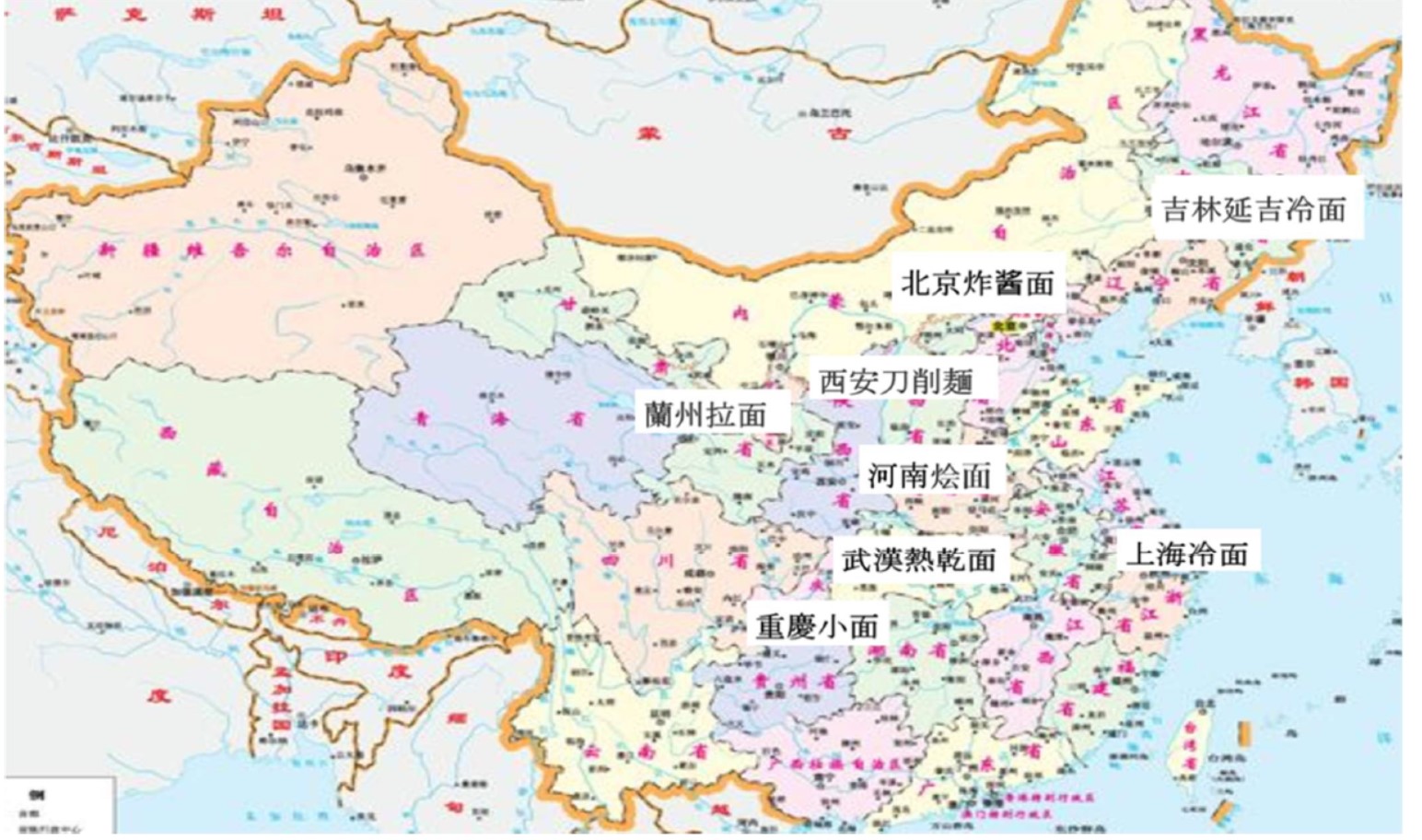
①武漢熱乾面Wuhan hot dry noodles: These noodles are normally eaten without soup, with a sesame sauce-based and garlicky taste.
➁北京炸酱面Beijing Zhajiang noodles: These noodles are thick and white, similar to udon noodles, and are very appetizing. There is no soup, and the sauce is doubanjiang and minced meat. "Zhajiangmian" is to fry miso in oil.
③重慶小面Chongqing Small noodles: These noodles are usually spicy, but the soup is adjustable. The ingredients are fried soybeans, coriander, green onions, etc. These noodles are simple but delicious and very popular.
④吉林延吉冷面Jilin Yanji Cold noodles: These noodles are made from wheat + soba + starch. Eaten in the summer, the soup is refreshingly flavored with vinegar and sesame oil. Seasoning with vinegar is rare in Chinese food.
⑤河南烩面Henan Braised noodles: These noodles are wide and flat and entwined with the soup. In Chinese letter, "烩" means "thickness". The soup stock is from sheep. The ingredients are sheep's guts and wood ear, a type of fungus. There are many chain stores selling this type of noodle.
⑥上海冷面Shanghai cold noodles: These noodles are usually served without soup, and the taste is based on sesame sauce sprinkled with black vinegar. It contains bean sprouts, green peppers, and is sold only from June to September. This is a great dish for the humid and hot summers of Shanghai.
⑦蘭州拉面 Lanzhou noodles: These noodles are handmade and stretched. The source uses spices such as pepper and Japanese pepper and has an exotic flavor. The ingredients are coriander, green onions and beef.
⑧西安刀削面 Xian knife cutting noodles: These noodles are characterized by being cut off with a knife, hence the name of the noodles. has a chewy texture, and is filling.

The shipping industry is closely linked to the need for energy and we are responsible for the transport of many energy sources. We will continue to contribute to the supply of energy through safe and stable transportation.

Writer:Senji Tokumoto
Joined MOL in 1990. Experienced in a variety of businesses such as Logistics, Container, Wood chip transportation, and Iron Ore & Coal transportation. It has been 13 years since I was sent to Shanghai for language training in 1994, and this is my fourth visit to China (from April 2020). China is changing day by day and there is no end in sight. It's like a saying, "Rolling stones don't grow moss.” We would like to keep promoting our services to China and Taiwan, where the pace of growth is "constantly rising" and "constantly advancing". Since my body is my capital, I keep my physical condition by running and swimming.
Recommended Articles
2022.07.05
- General Shipping
2021.04.13
- Energy
2023.12.19
- General Shipping
2021.08.07
- Eco Friendly
2025.03.18
- General Shipping
Latest Articles
2025.12.09
- Eco Friendly
- General Shipping
2025.12.03
- General Shipping
2025.11.20
- Energy
- General Shipping









